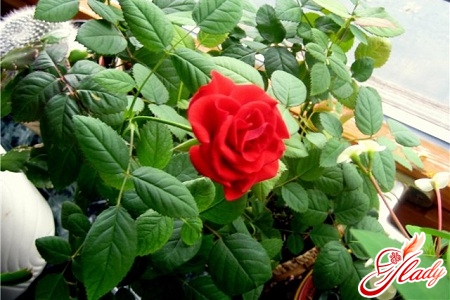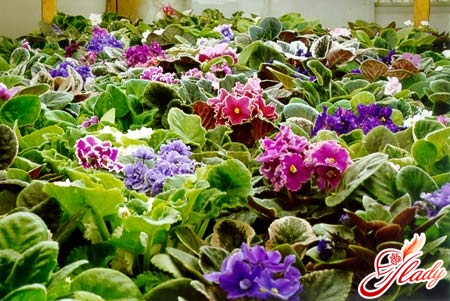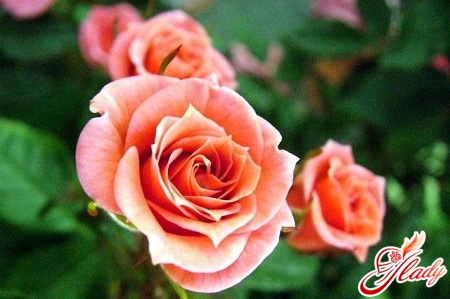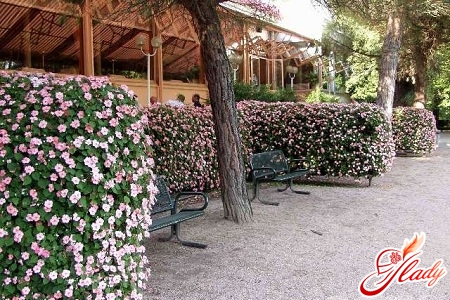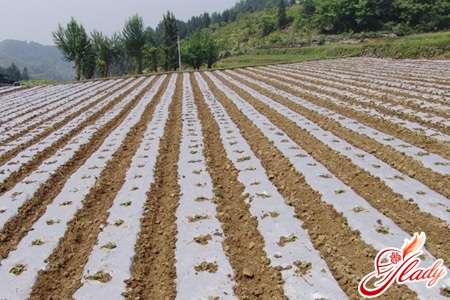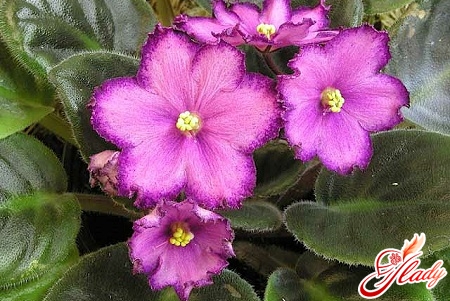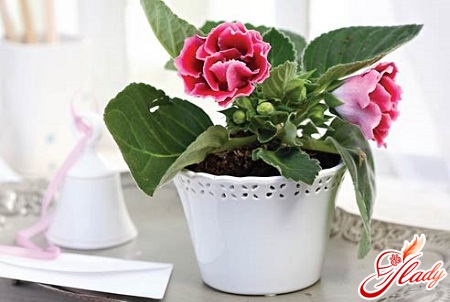 Real growers can not get bysuch bright and beautiful representatives of houseplants, which are gloxinia. Their large buds delight owners with their blossoming views once or twice a year and in form really resemble a bell with delicate velvety petals. Undoubtedly, the cultivation of gloxins is a laborious process and requires patience. But as a result, you get a real gem of your home greenhouse. And now a little general information about what this plant is in nature. It should be noted that gloxinia in the plant classifier refer to tropical perennial grasses and semishrubs. They have a root system in the form of scaly tubers. Their stem is straight, the leaves are opposite each other. Flowers are quite large solitary buds that come out of the sinuses. The area of distribution of this plant is practically the entire territory of America. In the natural environment of the representatives of the described family can be found in the rocky terrain, on the banks of rivers and in the shady forests.
Real growers can not get bysuch bright and beautiful representatives of houseplants, which are gloxinia. Their large buds delight owners with their blossoming views once or twice a year and in form really resemble a bell with delicate velvety petals. Undoubtedly, the cultivation of gloxins is a laborious process and requires patience. But as a result, you get a real gem of your home greenhouse. And now a little general information about what this plant is in nature. It should be noted that gloxinia in the plant classifier refer to tropical perennial grasses and semishrubs. They have a root system in the form of scaly tubers. Their stem is straight, the leaves are opposite each other. Flowers are quite large solitary buds that come out of the sinuses. The area of distribution of this plant is practically the entire territory of America. In the natural environment of the representatives of the described family can be found in the rocky terrain, on the banks of rivers and in the shady forests.
"Wild parents" of a house plant
Now fascinating in its beauty flowergloxinia can be admired by each of us, if expressed a desire to settle this exotic guest among the remaining copies of its green collection. The most popular are just a few variations of these velvety bells. But they are all obtained as a result of crossing the two main types of gloxinia - royal and beautiful. Agree, even the dictionary combination of these names itself hints at a very effective result of selection. Scientists really managed to bring out unusually beautiful plant varieties. What are the so-called "parents" of these popular indoor beauties? Gloxinia royal (or Gloxinia regina) is a herbaceous plant. It has thickened stems, the length of which is within ten centimeters, and four to six pairs of oval heart-shaped leaves up to twenty centimeters long. The main color of the leaves is dark green, and along the veins easily visible light silver. Buds in shape resemble drooping bells, they are located on long legs and reach seven centimeters in diameter. Blossoms gloxinia royal in the summer, and after the end of the active period, its aerial parts wither and fall away. In winter, it is at rest, and in spring it releases new shoots. Gloxinia beautiful (or Gloxinia speciosa) is also a species of herbaceous plants. It has long wide oval, tapering at the ends and evenly colored leaves in green with short petioles. The shape and shade of the buds depends on the plant variety. There are flowers with a simple and folded bend of the part of the corolla, drooping or, conversely, directed upwards, red and white, purple, tender pink, blue, purple and so on. 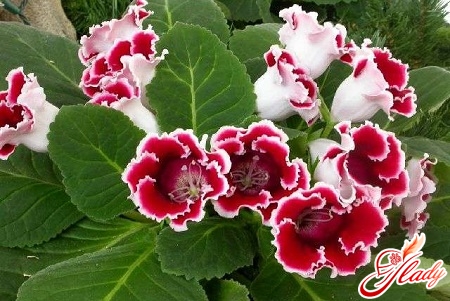
Features of flowering and gloxinia disease
If your plant is grown correctly withobservance of the necessary conditions for caring for him, then after the appearance of the fourth pair of young leaves you can see the buds. Their quantity and quality directly depends on the size of the tuber and the main moments of the maintenance of the plant. If you became a happy owner of the individually grown hybrid varieties Brokade or Avanti, you will certainly be able to once again admire their repeated flowering, if the first occurred at an early stage of plant development. To do this, cut the stem and leaves, leaving only a two-centimeter shoot. Soon you will see that the gloxinia will give the lateral processes of the so-called second growth. They are formed buds-bells smaller than it was the first time, the size. It should be noted that not all varieties of this plant are re-flowering. Most often, owners of different types of gloxinia are faced with the fact that the plant affects numerous diseases. The main and most dangerous of them are:
- blight
- decay of a tuber
- fusariosis
- blackleg
- powdery mildew
- pythoid and gray rot and other diseases of fungi, viruses, infections and bacteria
Many diseases are caused by improper irrigation,waterlogging or contamination of the soil. Often, flowers become victims of parasitic insect pests - mites and thrips. As preventive and curative measures, flower growers recommend using preparations called phytosporin and baseazol. But it is equally important to adhere to a number of mandatory rules for the content of gloxinia. It is not recommended to place several flowerpots with plants in one pallet. Colors require diffuse light and the direct sunlight is completely counter-indicative. Take care also of the correct distance between the nearby plants. The copies you have should not obscure each other, they need free access to fresh air. In such a simple way, you can prevent quite dangerous diseases, for example, to avoid blackening the legs. There are a number of recommendations for the construction of soil, in which gloxinium grows. It must have a peat basis and it is good to let in air and moisture. Before planting plants, the soil for them should be steamed or treated with phytosporin. This will destroy most of the bacteria, infections and viruses that provoke major gloxinia diseases. Remember that watering should be carried out evenly over the entire surface area, avoiding pouring or drying. Significant temperature fluctuations, cold or, conversely, heat, also adversely affect the plant, weaken it and provoke various diseases. The key to successful breeding of gloxinia at home is the healthy material for planting and keeping the flower collections clean. 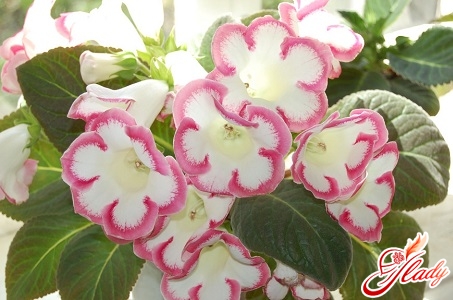
Pests that can kill gloxins
A plant with velvet bells is very fond ofthrips and tongs. These pests can be of several varieties, so it is necessary to know what signs indicate a lesion by a particular parasite. Cyclamenic tick is so small that it can only be examined under a microscope. Its accumulations on the undersides of the leaves resemble gray dust. If gloxinia was attacked by this kind of tick, then the following negative changes of its general form can be noted with the naked eye:
- there is thickening, deformation and folding of leaves
- buds wither or from them formed underdeveloped flowers of irregular shape
- growth slows down
- the underside of the leaves is covered with a touch of
- The tips of the shoots become brown and dry out
If the main drawback of your apartment isexcessively dry and warm air, the fact of defeat of plants by a spider mite is not excluded. Carefully inspect your gloxinia: the appearance of the disease can be judged by a thin cobweb on its leaves and flowers. An attentive mistress will always be able to recognize the danger on time according to her first signs, for example, by the presence of small whitish points on the leaves, which subsequently form dirty yellow spots. The peculiarity of the spider mite is the high speed with which it jumps from one plant to another, quickly hitting all available specimens. To prevent the appearance of ticks, frequent ventilation of premises and regular spraying of gloxins with water helps. If parasites have already settled on your flowers, carefully inspect the plants and remove the affected leaves. Then with a weekly interval, make three insecticidal treatments of the plant itself with special preparations. If you are on time treatment, the flower will be saved. Another type of insect pests - thrips - is also a great danger for gloxins. They hatch from the eggs laid by the females on the back of the leaves, feed on their cell sap and then go to the ground. Adults have wings, so they easily spread to all plants. The fact that gloxinia were attacked by thrips is evidenced by the appearance of a characteristic silvery shine on the face of the leaves, as well as the presence of bright spots and spots. Green plates lose their natural shade, become brown, deform and dry. It is difficult to fight with thrips. Immediately cut off their gloxinia. One treatment with an insecticide is not enough, so a week later the procedure should be repeated. Disinfected not only the plant itself, but also the soil, as well as the place where the flower stood. For greater efficiency, do not be too lazy to transplant the gloxinia into a new soil, and before that rinse thoroughly its root system. Attention and caring attitude to the plants available to you, as well as observance of all the basic recommendations for caring for them, guarantees huge gratitude on their part in the form of unusually beautiful and bright buds. Their view will be admired not only by you, but also by your numerous guests. Love your green pets, and they will surely answer you the same.




